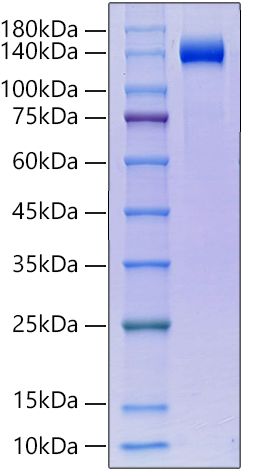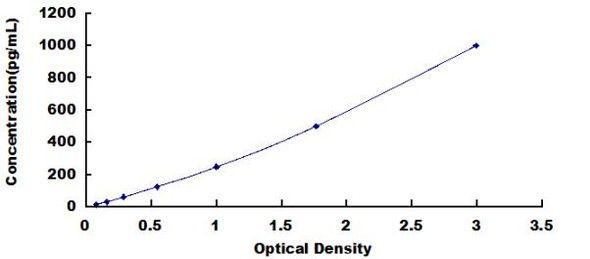Description
Recombinant Human Klotho beta/KLB Protein
The Recombinant Human Klotho beta/KLB Protein is a biologically active recombinant protein that plays a significant role in various cellular processes and signaling pathways in human biology. This protein is widely employed in immunological research, cell biology studies, protein-protein interaction analyses, and therapeutic development, providing researchers with a reliable tool for investigating Klotho beta/KLB function and its implications in health and disease.
This product (SKU: RPCB0090) is produced using HEK293 cells and features a C-His tag for convenient detection and purification. The protein exhibits a calculated molecular weight of 110.25 kDa with an observed molecular weight of 110-140 kDa under denaturing conditions, achieving ≥ 95 % as determined by SDS-PAGE.. Functional bioactivity has been validated through rigorous quality control assays, confirming its suitability for demanding research applications.
Key Features
| High Purity by Affinity Chromatography | |
| Mammalian & Bacterial Expression Systems | |
| High lot-to-lot consistency via strict QC |
| Product Name: | Recombinant Human Klotho beta/KLB Protein |
| SKU: | RPCB0090 |
| Size: | 10 μg , 100 μg |
| Reactivity: | human |
| Synonyms: | KLB, Beta-klotho, BKL, BetaKlotho, Klotho beta-like protein |
| Tag: | C-His |
| Expression Host: | HEK293 cells |
| Calculated MW: | 110.25 kDa |
| Observed MW: | 110-140 kDa |
| Gene ID: | 152831 |
| Protein Description: | High quality, high purity and low endotoxin recombinant Recombinant Human Klotho beta/KLB Protein (RPCB0090), tested reactivity in HEK293 cells and has been validated in SDS-PAGE.100% guaranteed. |
| Endotoxin: | < 1 EU/μg of the protein by LAL method. |
| Purity: | ≥ 95 % as determined by SDS-PAGE. |
| Formulation: | Lyophilized from a 0.22 μm filtered solution of PBS, pH 7.4. |
| Bio-Activity: | Immobilized Human Klotho at 1 μg/mL(100 μL/Well).Dose response curve for Anti-Klotho Ab.1 with the EC 50 of 0.4 μg/ml determined by ELISA. Immobilized Human Klotho at 2μg/ml(100 μL/Well).Dose response curve for Anti-Klotho Ab. 2 with the EC 50 of 20.5 ng/mL determined by ELISA. |
| Reconstitution: | Centrifuge the vial before opening. Reconstitute to a concentration of 0.1-0.5 mg/mL in sterile distilled water. Avoid vortex or vigorously pipetting the protein. For long term storage, it is recommended to add a carrier protein or stablizer (e.g. 0.1% BSA, 5% HSA, 10% FBS or 5% Trehalose), and aliquot the reconstituted protein solution to minimize free-thaw cycles. |
| Storage: | Store at -20℃.Store the lyophilized protein at -20℃ to -80 ℃ up to 1 year from the date of receipt. After reconstitution, the protein solution is stable at -20℃ for 3 months, at 2-8℃ for up to 1 week. |
Klotho beta/KLB iis a divergent structural member of the glycosidase I superfamily, is expressed primarily in the liver and pancreas, with lower expression in adipose tissue. Like Klotho, Klotho beta facilitates binding between FGF19 subfamily members and their receptors via formation of a ternary complex. The Klotho beta mediated interaction of human FGF19 (mouse FGF15) with FGF Receptor 4 in the liver negatively regulates bile acid synthesis by controlling the secretion of two key bile acid synthase genes, cholesterol 7-alpha hydroxylase (Cyp7a1) and sterol 12-alpha hydroxylase (Cyp8b1). Klotho beta is also a cofactor for the interaction of FGF21 with FGF Receptor 1c in adipocytes, which allows FGF21 to stimulate GLUT1 expression, upregulating adipocyte insulin-dependent glucose uptake. Since Klotho-related proteins lack critical active site Glu residues present in beta -glycosidases, it was initially unclear whether they were functional enzymes. However, glucuronidase activity has since been demonstrated for Klotho, indicating that physiologically relevant enzymatic activity for Klotho beta is also possible.







